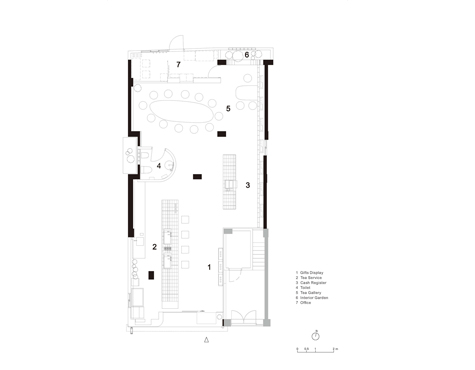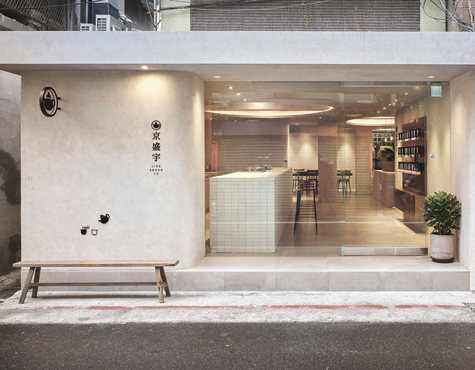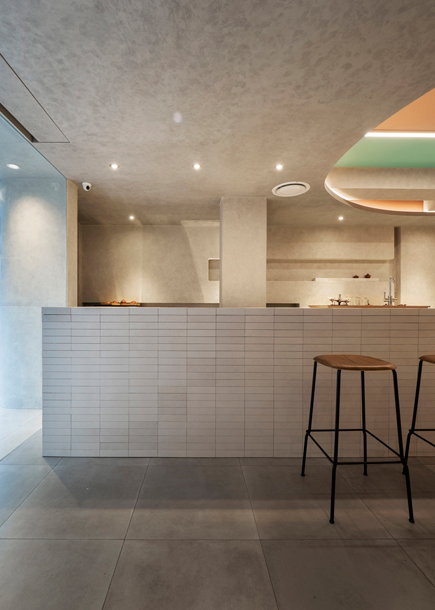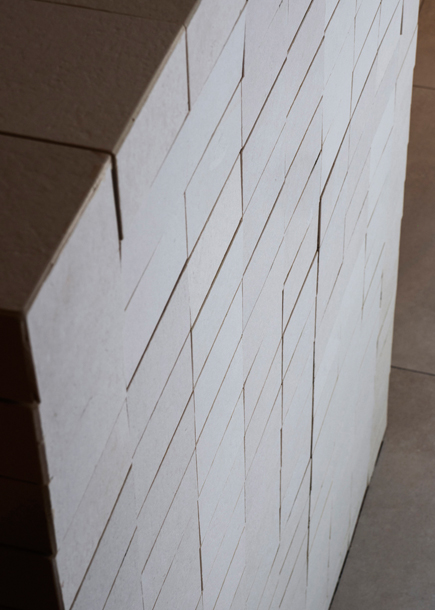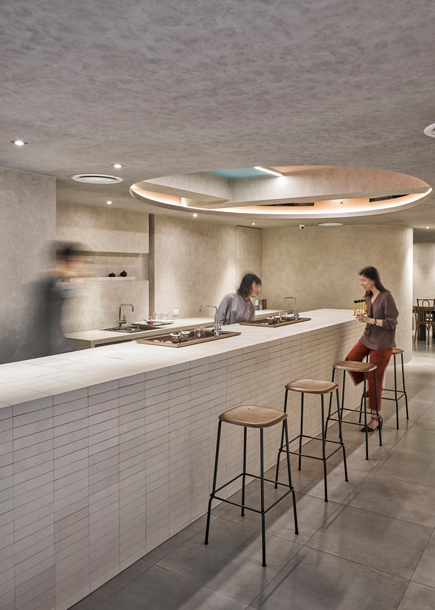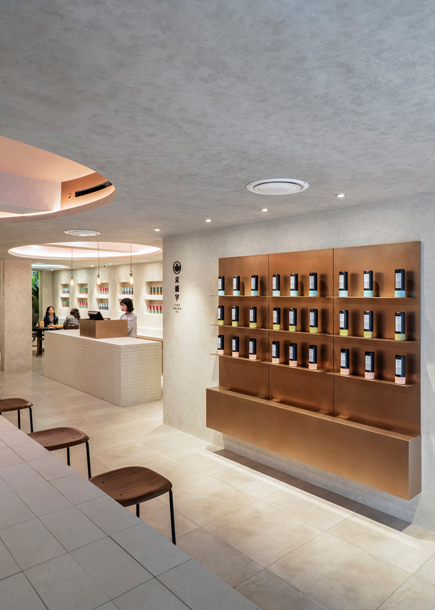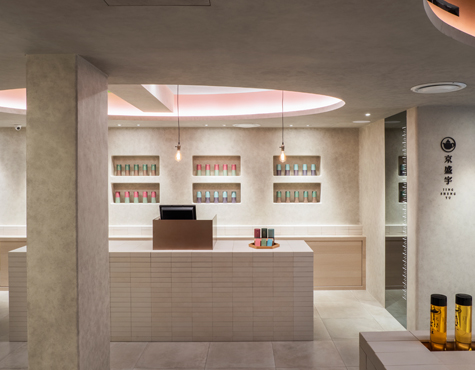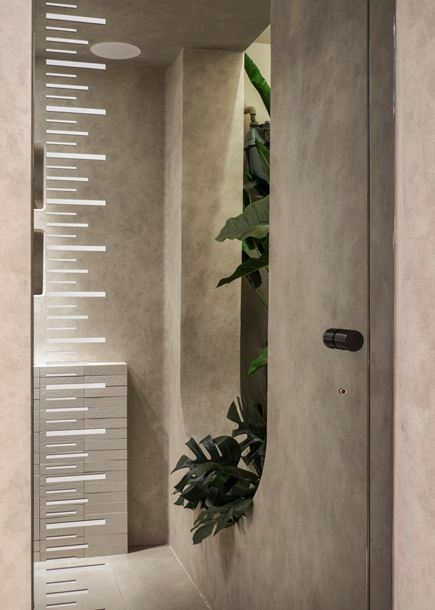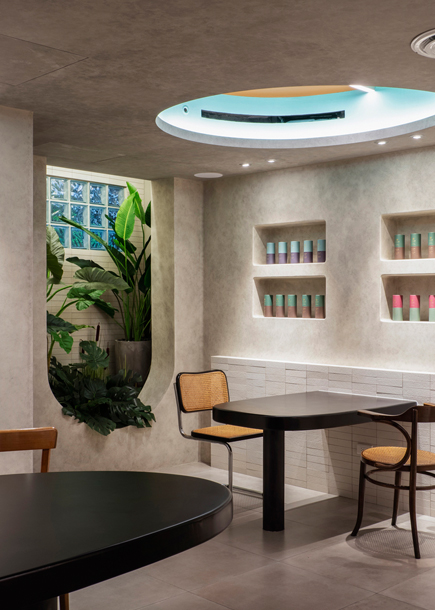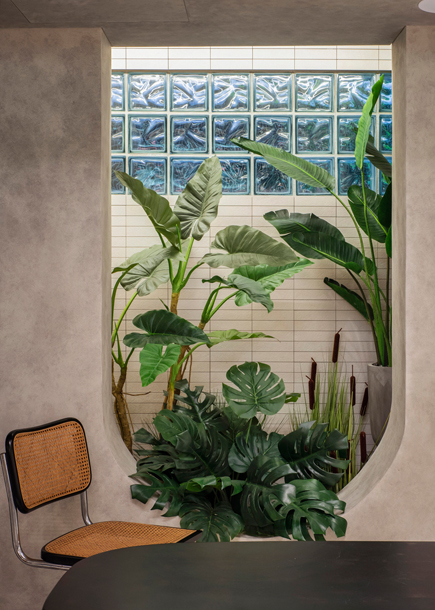JSY Concept Tea store
Located in the renowned Yong-Kang marketplace for tourist, the Jing Sheng Yu, a tea brand that aims to modernize traditional Taiwanese tea culture, recently opened a concept store to enrich the humanistic values in the area. BY using "Shared Living Room" as a branding identity, a public space for tea culture, the store offers tea service that integrates the traditional and modernized tea set. Serving together with pineapple cakes from Sunny Hills as an interdisciplinary business alliance, the tea set adopts the spirit of "One Encounter, One Chance" to blend tea, space, humanity into each encounter.
The tea plant is nurtured by the earth, and the Zisha teapot is given birth in the kiln, both of which are intimately related to the earth. The brick, a spatial constructive element, implicitly reflects the earth culture among tea and Zisha teapot, echoes the tone of the land. Inspired by both, a spatial scheme was adopted that the tea service bar was made from brick, set as an object within the space ; the house was conceived of as an earth cave, a stage background for events. Meanwhile, with a spirit to modernize the Taiwanese tea culture, a spatial concept of being pure and simple was applied to embody an austere atmosphere and deepen humanity tea culture.
A minimal cash counter, also made from brick, is added a little further on the opposite side of the service bar. Two brick objects, one on either side, one relatively longer than the other, dominate the rhythmic flow of the space. Behind the cash counter, there are display niches carved out of the wall to resonate the image of a cave house. Similarly, the ceiling was also designed like carved holes. However, unlike geometric shapes, these holes are composed more likely with organic curvatures, like a zoomed-up contour to imply the Zisha teapot surface texture. As a theme, these holes are called Zisha's "scent pores" representing the numerous invisible tiny ones on teapot surface that intercept the fragrance and increase its intensity. The hole inner surfaces were painted with the brand's commodity identity colors to suggest that the tea smell could be accumulated within the scaled up scent pores. In addition to ceiling color variation, the thickness contrast between the added light fixture and the existing beam dramatically outlines a composition made by lines and color blocks. It not only merges the traditional tea ceremony with the craft beauty, but also adds a dynamic modern taste into this serene space atmosphere.
To create an illusion of spatial expansion, mirror glasses were installed at specific corners with measurement scale etched on it. This shows a sense of precision as a combination of science and craftsmanship that echoes the brand's concept as well as brings more fun. At the end of the store is a tea serving section, a "Public Living-Room" for the visiting guests. Together with a concept of "Curation", a collection of information related to tea ceremony, art and the brand's history is displayed in this "Micro-Gallery". The selection of tea table and tea chair was out of a nostalgia and serene atmosphere. Mismatched table and chairs relax people's reserved moods, and help focus on their inner minds. With the atmosphere as well as the tea fragrance, a Taiwanese tea culture revolution subtly proceeds.

